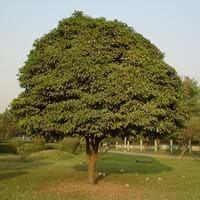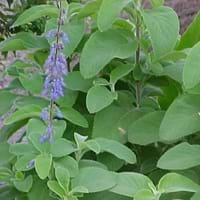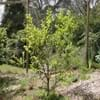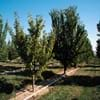Life Span
Perennial
Perennial
Type
Fruit
Flowering Plants, Herbs
Origin
India, Melanesia
Not Available
Types
Alphonso, Florigon, Jakarta
Not Available
Number of Varieties
Not Available
Habitat
Subtropical climates, Tropical regions
Not Available
USDA Hardiness Zone
10-15
Not Available
AHS Heat Zone
Not Available
Not Available
Sunset Zone
H1, H2, 23, 24
Not Available
Habit
Oval or Rounded
Clump-Forming
Flower Color
Yellow, Red
Lavender
Flower Color Modifier
Bicolor
Bicolor
Fruit Color
Yellow, Red, Green, Orange, Pink, Rose, Bronze
Not Available
Leaf Color in Spring
Red, Purple, Dark Green, Bronze
Light Green
Leaf Color in Summer
Red, Purple, Dark Green, Bronze
Green
Leaf Color in Fall
Red, Purple, Dark Green, Bronze
Green
Leaf Color in Winter
Light Green
Green
Plant Season
Spring, Summer, Fall, Winter
Summer, Fall
Sunlight
Full Sun
Partial shade, Partial Sun
Type of Soil
Loam, Sand
Loam, Moist
The pH of Soil
Acidic, Neutral, Alkaline
Neutral, Slightly Alkaline
Soil Drainage
Well drained
Well drained
Bloom Time
Early Spring, Spring, Late Spring, Early Summer, Summer, Winter, Late Winter
Early Summer, Late Summer
Tolerances
Drought
Not Available
Where to Plant?
Ground
Ground
How to Plant?
Grafting, Seedlings, Stem Planting, Transplanting
Cuttings
Plant Maintenance
High
Medium
Watering Requirements
Over-head watering
Do not water excessively
In Summer
Lots of watering
Ample Water
In Spring
Moderate
Average Water
In Winter
Average Water
Moderate
Soil pH
Acidic, Neutral, Alkaline
Neutral, Slightly Alkaline
Soil Type
Loam, Sand
Loam, Moist
Soil Drainage Capacity
Well drained
Damp
Sun Exposure
Full Sun
Partial shade, Partial Sun
Pruning
Remove damaged leaves, Remove dead branches, Remove dead leaves
Remove damaged leaves, Remove dead leaves
Fertilizers
All-Purpose Liquid Fertilizer
10-10-10 diluted liquid fertilizer, All-Purpose Liquid Fertilizer
Pests and Diseases
Red blotch
Leaf spot, Root knot nematode, Root rot, Verticillium Wilt
Plant Tolerance
Drought
Not Available
Flowers
Insignificant
Yes
Flower Petal Number
Single
Single
Foliage Texture
Medium
Fine
Foliage Sheen
Glossy
Matte
Attracts
Birds
Not Available
Allergy
bullous cheilitis, contact allergic dermatitis, Urticaria
Cough, flushing of face, Low blood pressure, restlessness, stinging, Throat itching, tremor
Aesthetic Uses
Showy Purposes
Showy Purposes, Used for making hedges
Beauty Benefits
Acne, Improve hair condition, Makes teeth white, Moisturizing, Removes dandruff
No Beauty Benefits
Environmental Uses
Air purification, Food for birds, Shadow Tree
Air purification
Medicinal Uses
anti-cancer, Digestion problems, Eye Problems, High cholestrol, Immunity
convulsions, Heart problems, painful urination, spasmodic pain
Part of Plant Used
Whole plant
Leaves, Root, Seeds
Other Uses
Grown for shade, Used As Food, Used as Ornamental plant
Employed in herbal medicine
Used As Indoor Plant
No
No
Used As Outdoor Plant
Yes
Yes
Garden Design
Edible, Feature Plant, Fruit / Fruit Tree, Shade Trees, Tropical
Container, Mixed Border
Botanical Name
MANGIFERA indica
Plectranthus barbatus
Common Name
Mango
Coleus forskohlii, Indian coleus
In Hindi
आम का पेड़
पत्थरचूर
In German
Mango Baum
Harfensträucher
In French
Manguier
Coléus à forskoline, Coléus de l'Inde
In Spanish
Árbol de mango
Coleus forskohlii
In Greek
Mango Tree
Coleus Forskohlii
In Portuguese
Mangueira
Boldo-de-jardim, Boldo-da-terra
In Polish
Drzewo mango
Coleus Forskohlii
In Latin
Mango ligno
Coleus Forskohlii
Phylum
Magnoliophyta
Magnoliophyta
Class
Magnoliopsida
Magnoliopsida
Order
Sapindales
Lamiales
Family
Anacardiaceae
Lamiaceae
Clade
Not Available
Angiosperms, Asterids, Eudicots
Tribe
Not Available
Not Available
Subfamily
Not Available
Not Available
Number of Species
Not Available
Not Available
Season and Care of Mango Tree and Coleus Forskohlii
Season and care of Mango Tree and Coleus Forskohlii is important to know. While considering everything about Mango Tree and Coleus Forskohlii Care, growing season is an essential factor. Mango Tree season is Spring, Summer, Fall and Winter and Coleus Forskohlii season is Spring, Summer, Fall and Winter. The type of soil for Mango Tree is Loam, Sand and for Coleus Forskohlii is Loam, Moist while the PH of soil for Mango Tree is Acidic, Neutral, Alkaline and for Coleus Forskohlii is Neutral, Slightly Alkaline.
Mango Tree and Coleus Forskohlii Physical Information
Mango Tree and Coleus Forskohlii physical information is very important for comparison. Mango Tree height is 910.00 cm and width 460.00 cm whereas Coleus Forskohlii height is 40.00 cm and width 30.00 cm. The color specification of Mango Tree and Coleus Forskohlii are as follows:
Mango Tree flower color: Yellow and Red
Mango Tree leaf color: Red, Purple, Dark Green and Bronze
Coleus Forskohlii flower color: Lavender
- Coleus Forskohlii leaf color: Light Green
Care of Mango Tree and Coleus Forskohlii
Care of Mango Tree and Coleus Forskohlii include pruning, fertilizers, watering etc. Mango Tree pruning is done Remove damaged leaves, Remove dead branches and Remove dead leaves and Coleus Forskohlii pruning is done Remove damaged leaves and Remove dead leaves. In summer Mango Tree needs Lots of watering and in winter, it needs Average Water. Whereas, in summer Coleus Forskohlii needs Ample Water and in winter, it needs Moderate.





